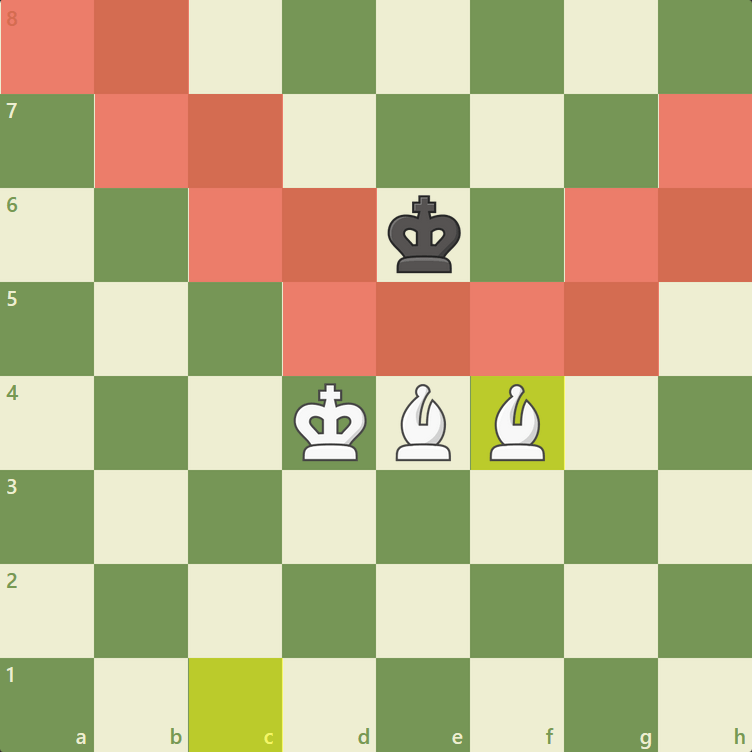

Rather, move the bishop intended to deliver the checkmate to clear the enemy's escape path, then bring your king to its final destination! When done correctly, the enemy has nothing better to do than to move back and forth between two squares. Now is the time for the last trick: no longer do you have to swing the bishop around to get the checkmate. Rinse and repeat the process until your king is just three squares away from the board's edge. Now the opponent must move one square closer to the corner. If you have just one bishop, you can still mate with just.

Finally, below are two random checkmate positions with two bishops. In fact: If you have two bishops, you can mate without the knight, and its fairly easy. TwoBishopsRandomizer has been TDDed as described in the tests below. The color () method finds out which color a square is. Then, you spend two moves to move your bishop to the other side of your second bishop, closing in the cage. Then, it checks out that the two bishops are of different color, for which a new method called color () has had to be written in ChessPGNANSquare. (This is not the case when youre trying to checkmate with a bishop and a knight!) By moving a bishop around with your king, you'll be able to slowly achieve this goal.įirst, you take a step back with your bishop and take the vacant square with your king. Now is the time to put your adversary's king into the corner square.īoth bishops will work, and you'll have both bishops at your disposal. This should be sufficient until you reach the back end. Place your bishops next to each other to form the barrier of doom, then march your monarch next to them to reclaim the opponent. Like with rooks, two bishops can effectively remove a king in one direction, but they cannot force it down the board entirely.

To reverse engineer the result, you can go backwards from here, but here's a step-by-step guide. The enemy king has to be thrust into a corner, with one bishop checking them, and the second one laser-beaming away their escape path in one direction. It may also arise in practical situations, and it would be extremely embarrassing to lose half a point because of this!įirst, you need to know what the ending position is. As an amateur player, this is one of the toughest mating patterns to understand, but it's a useful skill to have, and it reminds you of the power of the bishop pair at any point in the game.


 0 kommentar(er)
0 kommentar(er)
